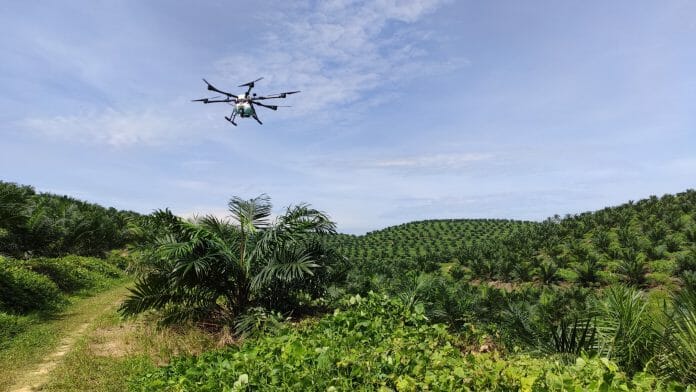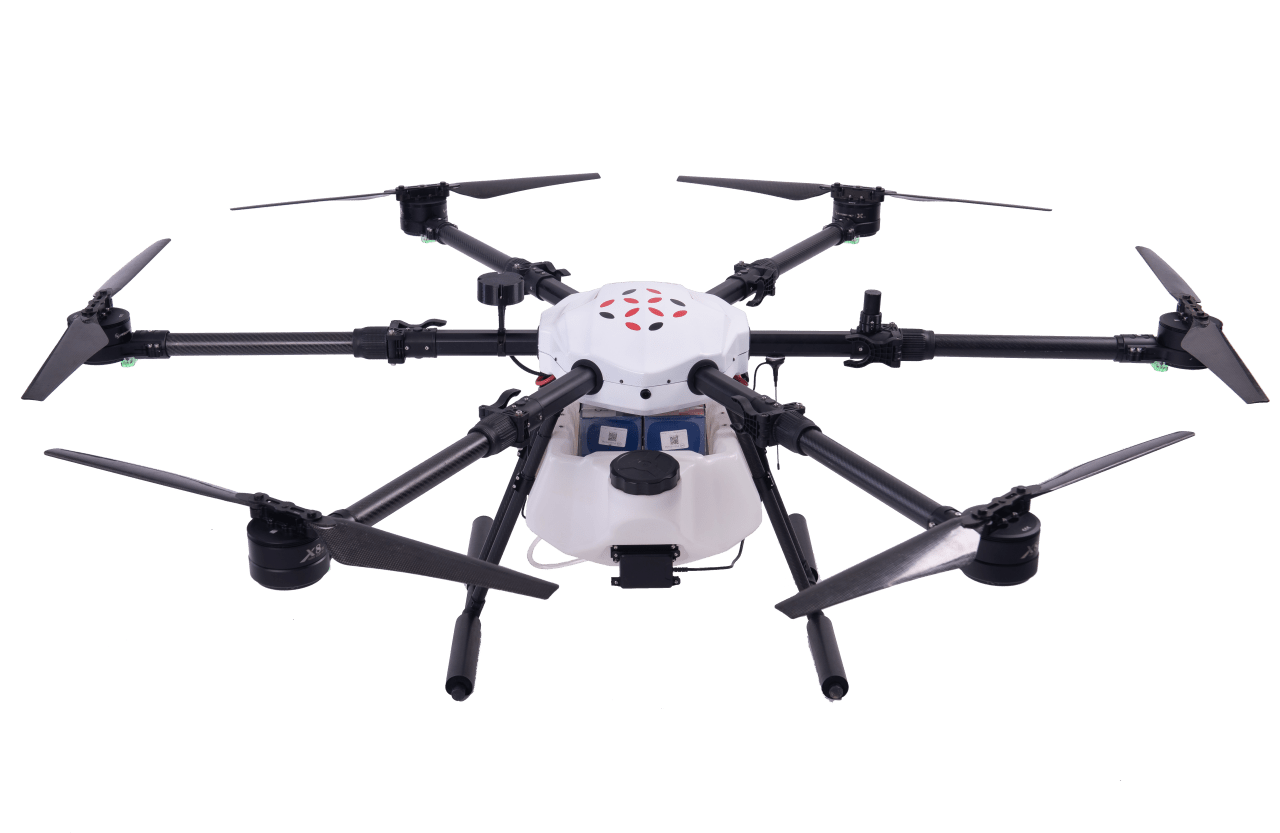Malaysian oil palm estates commonly suffer from rhinoceros beetle attacks, which is estimated to cause an annual yield loss of up to 25 percent in the palm oil sector, an industry valued at RM161 billion globally.
As the second largest palm oil producer in the world, Malaysian farmers have long tested various methods for damage control, with regular pesticidal spraying especially on young vulnerable palms being the most effective.
However, on much of the 4.2 million hectares of planted oil palm in Malaysia, regular spraying is a costly and labour-intensive process for farmers.
Hoping to solve the impending issue, the Poladrone Oryctes drone is the world’s first drone model developed for usage in oil palm estates. Unlike blanket spraying drones that cover a wide area, the Oryctes units are built with a proprietary precision spraying system and AI spot targeting technology, which allows for centimetre-accurate spraying on individual oil palms.
“By mechanising the spraying process, Oryctes reduces the burden on physical labour while delivering efficient, high precision spraying. This empowers farmers to protect their crop yields from pest attacks, while greatly reducing labour costs in the long run,” Poladrone Chief Executive Officer, Cheong Jin Xi says in an interview with BusinessToday.
The adoption of Oryctes drones in oil palm estates represents a significant opportunity for both farmers and FELDA communities to upskill themselves in drone maintenance, operations and piloting.
In order to bridge this skill gap, Poladrone is offering complementary drone training courses to Oryctes users, guiding them on setup, flight control and drone care. “These high transferable skills not only equip farmers to operate agriculture drones but are also a starting point for mastering new technology including other types of drones and agricultural tools,” Cheong says.
For instance, in the Kedah “rice bowl” area, where blanket spraying drones are growing in popularity among the paddy farming community, this surge in demand has created a market for drone piloting and engineering skillsets.
Addressing societal and sectoral issues
“As we accelerate into the 4th Industrial Revolution, it is vital for our economy’s future that traditional industries such as agriculture are equipped to introduce automation and AI into their workflows.
The Oryctes drone helps oil palm estate holders, including communities of FELDA settlers, to make the step towards a more automated and efficient estate management system, to ensure our farmers maintain the global competitive edge,” he says.
On an individual level, he says the adoption of DroneTech among agricultural communities also presents opportunities for farmers to upskill themselves with cutting-edge, locally developed drone technology.
Cheong also shares a case study based on an extensive spraying project at an oil palm plantation in Ijok. “We found that Oryctes was able to reliably find and target the centers of oil palms with over 96% accuracy, out of over 3,800 palms sprayed. We also found that a single worker operating a unit of Oryctes Dual to spray 200ml per palm would cover 10.81 ha/day, matching or outperforming manual backpack by 2 to 3 ha/day and tractor mounted by 8 to 10 ha/day spraying,” he highlights.
In addition to the improved efficiency, drone spraying allows for exact control over spray amount, which is not possible with the other two spraying methods. Being able to control spray amount reduces wastage of insecticide, and also reduces excess chemical exposure to the environment.
Tackling regulatory issues
The usage of drones faces regulatory issues in most countries, and only with strict rules, they can be flown to a certain mileage. In Malaysia, drone laws are contained in the Civil Aviation Regulations 2016 and states that no person shall fly a drone for aerial work without authorisation by the director-general.
Over the years, drone business founders have claimed that while the laws are not restrictive, there is however no clear framework for commercial drone operations.
“As the demand for agriculture drones such as Oryctes increases among Malaysian farmers and plantation holders, we are optimistic and hopeful that it will drive important conversations for more comprehensive regulations especially for enterprise drones,” Cheong says.
Agriculture drones are one of the fastest-growing drone industries, with the global market expected to grow from US$1.2 billion to US$5.7 billion by 2025.
As for the future, the Poladrone CEO says the FELDA Sandbox Programme will serve as a great platform to introduce Oryctes to a new segment of the oil palm market, and an exciting opportunity to prove the efficacy of Malaysian-made tech to FELDA communities.
In addition to rhinoceros beetle spraying, Poladrone is also exploring Oryctes’ capability for bagworm control, another prevalent pest that plagues oil palm plantations.











